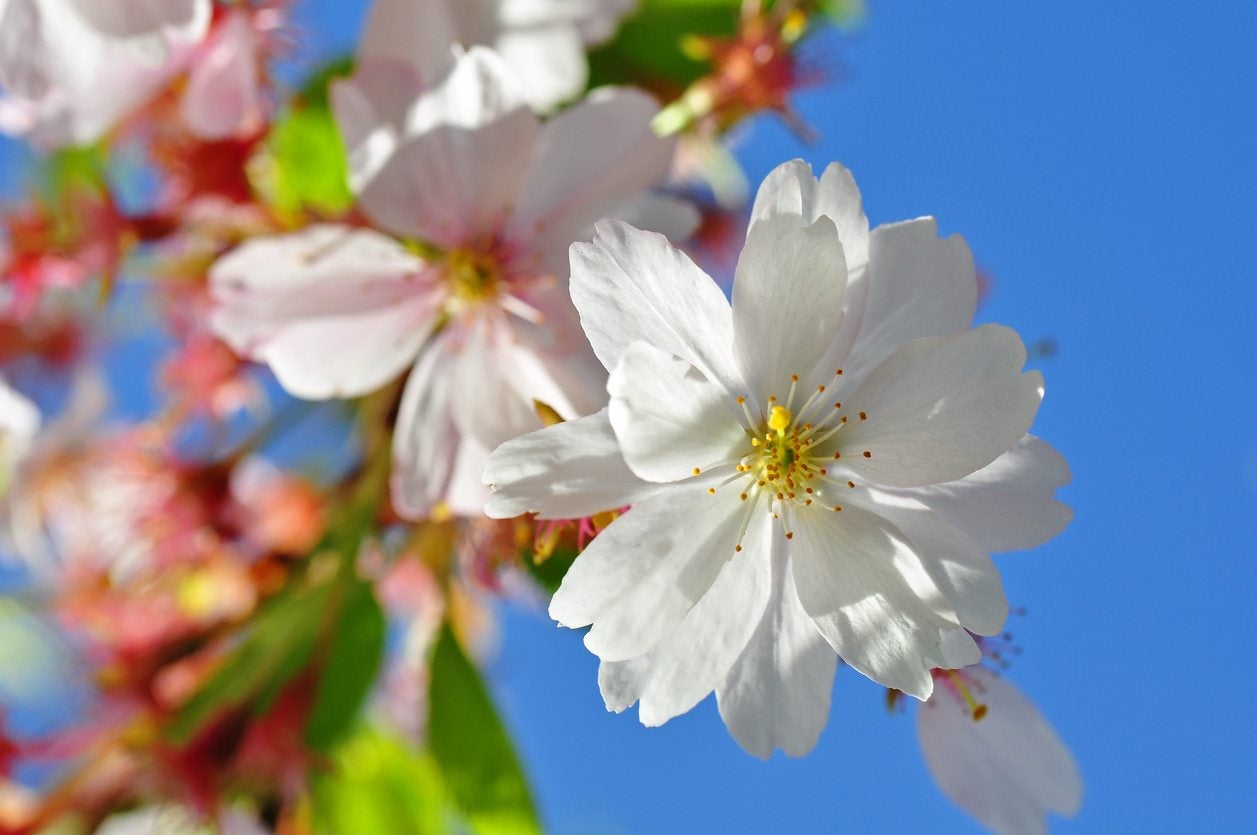Flowering Cherry Tree Care – How To Grow Ornamental Cherry Trees

One of the best times to visit the nation’s capital is in the spring when boulevards and avenues are accented by a profusion of flowering ornamental cherry trees. Several types of flowering cherry trees grace the grounds but the first planted in Washington, D.C. was the Yoshino cherry, a gift from the mayor of Tokyo. Interested in growing ornamental cherries? Read on to find out about different types of flowering cherry and flowering cherry tree care.
What are Flowering Cherry Trees?
Ornamental cherries are flowering cherry trees that are closely related to orchard cherry trees but are not grown for their fruit. Rather, ornamental cherries are grown for their ornamental properties, particularly their springtime floral displays. Ornamental or flowering cherry refers to several species of Prunus trees along with their cultivars. Most of these Prunus species hail from Japan. Although some types of flowering cherry produce fruit, it is usually too tart for human consumption. That doesn’t apply to birds, however. Many birds such as robins, cardinals, and waxwings find the tangy fruit very much to their liking. Many ornamental cherries are notable not only for their gorgeous spring blooms but also for their wonderful fall color with foliage that turns red, purple, or even orange. Growing Ornamental Cherries Ornamental cherry trees can be grown in USDA zones 5 to 8 or 5 through 9 in the west. Trees should be planted in full sun in well-draining soil and protected from strong winds. When choosing a tree, be sure to select one that is recommended for your zone and consider the eventual height and breadth of the tree at maturity. Ornamental cherries get from between 20 and 30 feet (6-9 m.) in height and live from between 25 and 50 years. Flowering cherries do well in almost any soil type or pH provided the soil is well-draining and moist. Plant flowering cherries in the early fall.
Flowering Cherry Tree Care
Flowering cherries do very well in the home garden, as their care is nominal. Water them thoroughly after planting and until the tree has been established. As with cultivated orchard cherry trees, flowering cherries are susceptible to both insect and disease issues. Prune to thin out branches and improve air and light circulation as well as to remove any dead or diseased branches. Treat any fungal diseases with an application of fungicide. Take care not to damage the fragile bark with mowers or string trimmers. Apply fertilizer regularly and be consistent with irrigation to minimize stress on the tree which can encourage pests and disease.
Types of Flowering Cherry
As mentioned, the first trees planted in Washington, D.C. were Yoshino cherries, but they are only one of several types of cherry. Yoshino cherry trees (Prunus x yedoensi) can grow 40 to 50 feet (12-15 m.) tall and wide usually with a rounded, spreading habit although some cultivars have a weeping form. They are also short-lived trees surviving 15 to 20 years of age. Cultivars of Yoshino include:
- Akebono
- Shidare Yoshino, a weeping variety
As common as the Yoshino along the nation’s boulevards are, so too are Japanese flowering cherries (Prunus serrulata). Japanese cherries grow from between 15 and 25 feet (5-8 m.) and the same distance across. Some have an upright form and some a weeping form. Japanese flowering cherries may have single or double, often fragrant blossoms from early to midspring. Japanese cherries are short lived, only 15 to 20 years of age. Cultivars of Japanese cherry include:
- Amanogawa
- Shogetsu
- Kwanzan
- Shirofugen
- Shirotae
Higan cherry trees (P. subhirtella) are the third type of flowering cherry. They will attain heights of between 20 and 40 feet (6-12 m.) and 15 and 30 feet (5-9 m.) across and may be upright and spreading, rounded, or weeping in habit. They are the most heat, cold, and stress tolerant of all the cherries and live longer than the others. Higan cherry cultivars include:
- Autumnalis, with a rounded, very wide canopy
- Pendula, a weeping cultivar
Finally, the Fuji cherry (P. incisa) is a compact dwarf variety of flowering cherry that features twisted limbs and early white blossoms with pink centers.
Sign up for the Gardening Know How newsletter today and receive a free copy of our e-book "How to Grow Delicious Tomatoes".

Amy Grant has been gardening for 30 years and writing for 15. A professional chef and caterer, Amy's area of expertise is culinary gardening.
